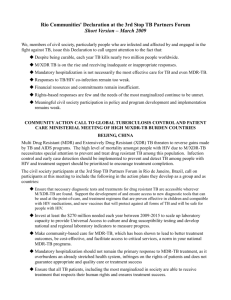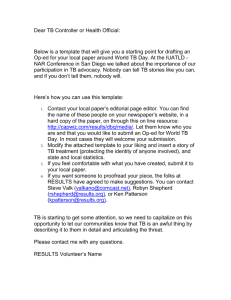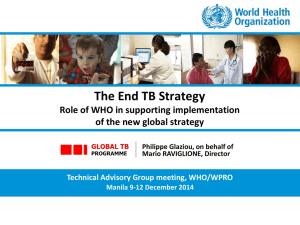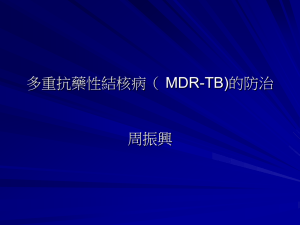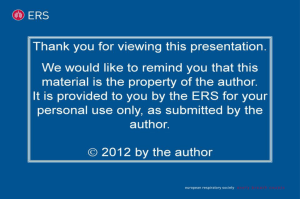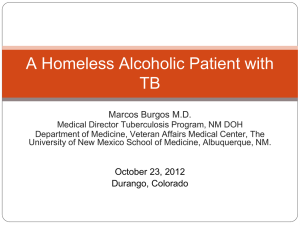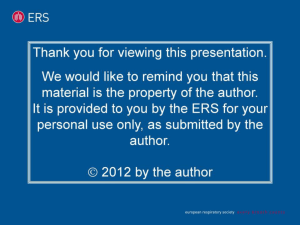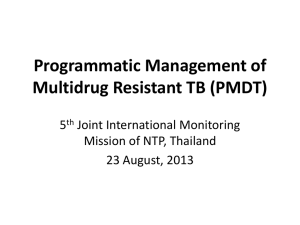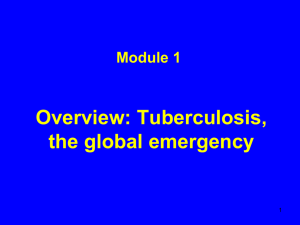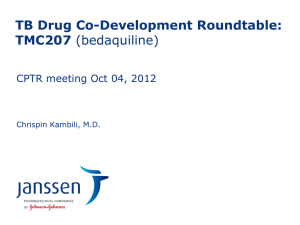TB - WHCA
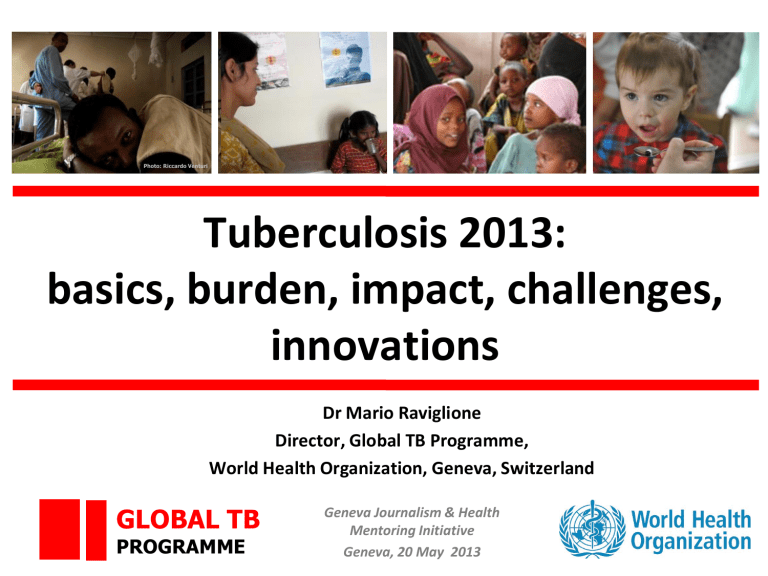
Photo: Riccardo Venturi
Tuberculosis 2013: basics, burden, impact, challenges, innovations
Dr Mario Raviglione
Director, Global TB Programme,
World Health Organization, Geneva, Switzerland
GLOBAL TB
PROGRAMME
Geneva Journalism & Health
Mentoring Initiative
Geneva, 20 May 2013
Overview
GLOBAL TB
PROGRAMME
Basics
Burden of TB, TB/HIV, MDR-TB
Impact of interventions, and progress in TB care and control
Vision beyond 2015
Innovations necessary towards elimination
Tuberculosis: basics
• Tuberculosis (TB) is one of the oldest diseases of humans
• TB is a major cause of death worldwide , it competes with
HIV/AIDS as the greatest killer globally due to a single infectious agent
• TB is also one of the top killers of women worldwide, half a million women died from TB in 2011
• TB is caused by the bacterium Mycobacterium tuberculosis
• TB usually affects the lungs , although other organs are involved in 15-30% of cases
• If properly treated, TB caused by drug-susceptible strains is curable in virtually all cases
• If untreated , TB may be fatal within 5 years in 2/3 of cases
• One third of world has latent TB infection
GLOBAL TB
PROGRAMME
Robert Koch discovered the cause of TB
24 March 1882
GLOBAL TB
PROGRAMME
Mycobacterium tuberculosis complex:
M. tuberculosis, M. bovis, M. microti, M. africanum,
M. pinnipedii, M. caprae ( and M. canettii)
How is TB transmitted? ..Via aerosolised particles from infectious patients
GLOBAL TB
PROGRAMME
Who carries the burden of tuberculosis?
…mostly, the most vulnerable
Poor, crowded & poorly ventilated settings
Half a million women and over 65,000 children die of
TB each year; 10 million
“TB” orphans
Migrants, prisoners, minorities, refugees face risks, discrimination
& barriers to care
TB linked to HIV infection, malnutrition, alcohol, drug and tobacco use, diabetes
The Global Burden of TB -2011
Estimated number of cases
All forms of TB
HIV-associated TB
8.7 million
(8.3–9.0 million)
1.1 million (13%)
(1.0–1.2 million)
Multidrug-resistant TB Up to 0.5 million
Source: WHO Global Tuberculosis Report 2012
GLOBAL TB
PROGRAMME
Estimated number of deaths
1.4 million*
(1.3–1.6 million)
430,000
(400,000–460,000)
Unknown, but probably > 150,000
* Including deaths attributed to HIV/TB
Incidence rates, 2011
Highest rates in Africa, linked to high rates of HIV infection
~80% of HIV+ TB cases in Africa
0
–24
25 –49
50
–149
150 –299
≥300
Per 100 000 population
TB/HIV co-infection: 80% of burden in Africa
TB leading cause of death in PLHIV
¼ of PLHIV worldwide die due to TB.
PLHIV infected with TB 20-40 times more likely to develop active TB.
Untreated, TB in PLHIV leads to death in weeks
80% of all TB/HIV cases are in Africa
GLOBAL TB
PROGRAMME
Drug resistant TB: Major challenge
o Multi-drug resistant TB (MDR-TB)
• Second-line drugs, toxic, costly, lengthy o Extensively drug resistant TB (XDR-TB)
• Almost incurable, fatal o Drug resistant TB results from inadequate TB care and irrational use of drugs o New York epidemic in early 90’s – Cost of response: US$ 1 billion
GLOBAL TB
PROGRAMME
Estimated number of MDR-TB Cases, 2011
>60% of all cases are in 6 countries
Russian Federation
44,000
(14% of global MDR burden)
China
61,000
(20% of global MDR burden)
South Africa
8,100
Based on old survey data
Pakistan
10,000
(3% of global MDR burden)
India
66,000
(21% of global MDR burden)
Philippines
11,000
(4% of global
MDR burden)
The boundaries and names shown and the designations used on this map do not imply the expression of any opinion whatsoever on the part of the World Health Organization concerning
GLOBAL TB
PROGRAMME lines for which there may not yet be full agreement.
WHO 2012. All rights reserved
Spotlight on XDR-TB
Case of Atlanta lawyer with presumed XDR-TB caused international concern
GLOBAL TB
PROGRAMME
To date, 84 countries have reported at least one XDR-TB case
GLOBAL TB
PROGRAMME
About 9% of MDR-TB cases are XDR
The case of Mumbai and the
“TDR-TB outbreak”
Udwadia ZF, Amale RA, Ajbani KK, Rodrigues C. Totally drug-resistant tuberculosis in India. Clin Infect Dis. 2012 Feb 15;54(4):579–81.
GLOBAL TB
PROGRAMME
The global response:
Targets, Global Plan, and Stop TB Strategy
Goal 6: to have halted by 2015 and begun to reverse the incidence…
2015: 50% reduction in TB prevalence and deaths compared to 1990
2050: elimination (<1 case per million population)
1.
Pursue high-quality DOTS expansion
2.
Address TB-HIV, MDR-TB, and needs of the poor and vulnerable
3.
Contribute to health system strengthening
4.
Engage all care providers
5.
Empower people with TB and communities
6.
Enable and promote research
THE WHO STOP TB STRATEGY
Pursue DOTS
Address TB/HIV and MDR-TB
Strengthen systems
Engage all care providers
Empower communities
Promote research
Global Progress
Incidence
Mortality
GLOBAL TB
PROGRAMME
51 million patients cured , 1995-2011
20 million lives saved since 1995
2015 MDG and other international targets on track
BUT, TB incidence declining far too slowly, 1/3 of cases not in the system,
MDR-TB un-tackled etc.
Innovating with GeneXpert
WHO endorsement December 2010
GLOBAL TB
PROGRAMME
Nearly 83 countries using it in March 2013
WHO GLOBAL
TB PROGRAMME
VISION:
A World FREE of TB
MISSION: The WHO Global TB Programme aims to advance universal access to
TB prevention, care and control, guide the global response to threats, and promote innovation.
GLOBAL TB
PROGRAMME
What we do: our core functions
Provide global leadership on TB;
Develop policies, strategies and standards for TB prevention, care and control;
Coordinate technical support to Member States, catalyze change, and build sustainable capacity;
Monitor the global TB situation, and measure progress in TB care, control, and financing;
Shape the TB research agenda and stimulate the generation, translation and dissemination of valuable knowledge;
Facilitate and engage in partnerships for TB action.
GLOBAL TB
PROGRAMME
The TB Elimination Strategy
VISION
A WORLD FREE OF TB
TOWARDS
ZERO
TB DEATHS
ZERO
TB CASES
ZERO
TB SUFFERING
Proposed Pillars and Principles of the
Post-2015 TB Strategy
Universal highquality TB care and prevention
Bold policies and supportive systems
Intensified research and innovation
Targets for 2025/2030
Target 1 Target 2 Target 3
75%/80% reduction in deaths due to TB
(compared with
2015)
40%/60% reduction in TB incidence rate
(compared with
2015)
No catastrophic expenditures for families affected by TB
CHALLENGES TO “ ELIMINATION "?
1.
Funding not secure; catastrophic expenditure for the poor
2.
Only 2/3 of estimated cases reported or detected (late)
3.
TB/HIV major impact in Africa
4.
MDR-TB, with high burden in former USSR and China
5.
Un-engaged non-state practitioners and communities, and the private sector
6.
Weak health policies, systems and services
7.
Social and economic determinants maintain TB
8.
Research awakening: old diagnostics, drugs and vaccines
GLOBAL TB
PROGRAMME
ROADBLOCK 1: Lack of commitment
"…
GLOBAL TB
PROGRAMME
…"
ROADBLOCK 2: Funding
Funding gap vs Global Plan ~ US$2–3 billion per year
Funding gaps reported by countries US$0.7 billion in 2013
GLOBAL TB
PROGRAMME
ROADBLOCK 3: Today, most used tools for TB control are old and not conducive to elimination
DIAGNOSTIC VACCINE TREATMENT
Sputum smear microscopy
Discovered 1882
BCG
Developed 1920s
1st-line TB drugs
Discovered 1943-1970
GLOBAL TB
PROGRAMME
ROADBLOCK 3: Bedaquiline – First drug in forty years
• Only data from Phase IIb trials available , further efficacy and safety data will be needed from rigorously conducted Phase
III trials
• On December 28, 2012, the U.S. Food and
Drug Administration approved bedaquiline
• Caution on use
• WHO advises that a single drug deemed to be effective should never be added alone to a regimen to which a patient is not responding to
• WHO has initiated a review process aimed at developing rapid interim guidance on the potential use of bedaquiline for the treatment of MDR-TB.
• Interim guidance from WHO in coming month
GLOBAL TB
PROGRAMME
ROADBLOCK 3: Research key for elimination
1. For elimination one would need potent short treatments, mass TLTBI and potent pre- and post-exposure vaccines. None is available today
2. Basic research is fundamental to gain further knowledge and R&D pipelines must be expanded , nurtured and well-financed.
3. TB Vaccine development: we need a global coalition of all engaged agencies so that efforts are harmonised and coordinated. This is not a job for one agency only!
4. Increased financial resources for research: keep working together to provide the right messages to investors
GLOBAL TB
PROGRAMME
What is in the pipelines for new diagnostics, drugs and vaccines in 2013?
GLOBAL TB
PROGRAMME
Diagnostics:
₋ 7 new diagnostics or diagnostic methods endorsed by WHO since 2007;
₋ 6 in development;
₋ yet no PoC test envisaged
Drugs:
1 new drug approved in late 2012, but probably little impact on epidemiology;
1 expected to be approved in 2013;
a regimen and other 2-3 drugs likely to be introduced in the next 4-7 years
Vaccines:
₋ 11 vaccines in advanced phases of
₋ development;
₋ 1 just reported with no detectable efficacy
Roadblock 4: Unregulated private sector
• Private sector is first point of care in many settings
• Diverse network of formal and informal providers ranging from hospitals, corporate sector to the traditional healers and quacks
• Contribution to finding people with
TB between 10%-40% in countries
• Collaboration exists but still not enough in many settings. Efforts need to be made on both ends
• Untapped potential
• Private sector engagement crucial in closing the gap on case detection
GLOBAL TB
PROGRAMME
Roadblock 5: Taking on the Pharmaceutical Industry
• Lobbying, promotion, economic incentives and infiltration
• Quality differentiation based on level of regulation
• Counterfeit medicines
• Drug resistance
• BUT, we need them on our side!
GLOBAL TB
PROGRAMME
TB crosses borders
GLOBAL TB
PROGRAMME
?
Question for you
How would you increase the profile of TB?
